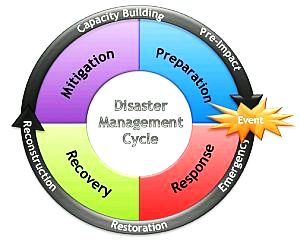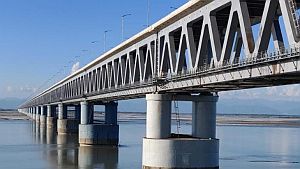- Details
- Written by Super User
- Category: Blog
- Hits: 1711
DISASTER MANAGEMENT - II
(I) UNIFIED COMMAND CENTRE/COMBINED ASSISTANCE & RELIEF ENCLOSURE
There are 2 aspects of Disaster Management work at an accident site. Firstly, rescue relief and restoration operation which is carried out by one set of functionaries. Second aspect pertains to rehabilitation of accident involved passengers, taking care of dead bodies, dealing with their relatives etc. for which a different set of functionaries are required. For managing these 2 distinct aspects of DM work that are required to be discharged by railways, two separate establishment should be set up at an accident site.
- Details
- Written by Super User
- Category: Blog
- Hits: 1913
Disaster management
Lesson No. 1
(I) Availability of Resources:
Resources available in case of a major accident may be grouped into 4 different units, depending on the time frame within which these can be made available after an accident.
These are as follows:
Resource Unit I - Railway and non-railway resources available on the train and at nearby surroundings.
Resource Unit II - Railway resources available at ARMV/ART depots and elsewhere within the division.
Resource Unit III - Railway resources available at ARMV/ART depots and elsewhere on adjoining Zones and Divisions.
Resource Unit IV - Non-railway resources available within or outside the division.
- Details
- Written by Super User
- Category: Blog
- Hits: 2666
MODERNISATION OF RAILWAYS
TRACK MODERNISATION
1.1 INTRODUCTION
Indian Railways, in keeping pace with advanced railways of the World, have been modernizing its railway system for quite some time. The maximum permissible speed of the train on B.G. system of Indian Railways till few years back was only 100 kmph. With effect from 1st March; 1969, the maximum speed was increased to 120 kmph on Delhi Howrah route. The increase of the speed has been possible after carrying out extensive investigations and trials in the shape of feasibility study on Rajdhani route with WDM-4 locomotive and ICF-all coiled coaches. The study was based on the fundamental concept that safety and comfort at high speed is dependent upon inter-action of the track and the vehicle. If the suspension system of the rolling stock is very good, the track maintenance may be even of comparatively average quality to get a reasonable level of comfort and stability at higher speeds. Based on this concept, it was considered that average speeds to a limited extent can be introduced economically on the Indian Railways without carrying out major changes in track structure by selecting better type of locomotives and rolling stock and maintaining the track to a slightly higher degree of maintenance. The Rajdhani Express was, therefore, hauled by a WDM-4 locomotive and all coiled coaches. The speed of the train which was originally 120 kmph has been increased to 140 kmph was a plan to increase the speed to 160 kmph is also under consideration of the Indian Railways. Semi High speed trains of 200 kmph are also under trial from 2016. Nine different routes have been identified in India for running Semi high speed trains.


